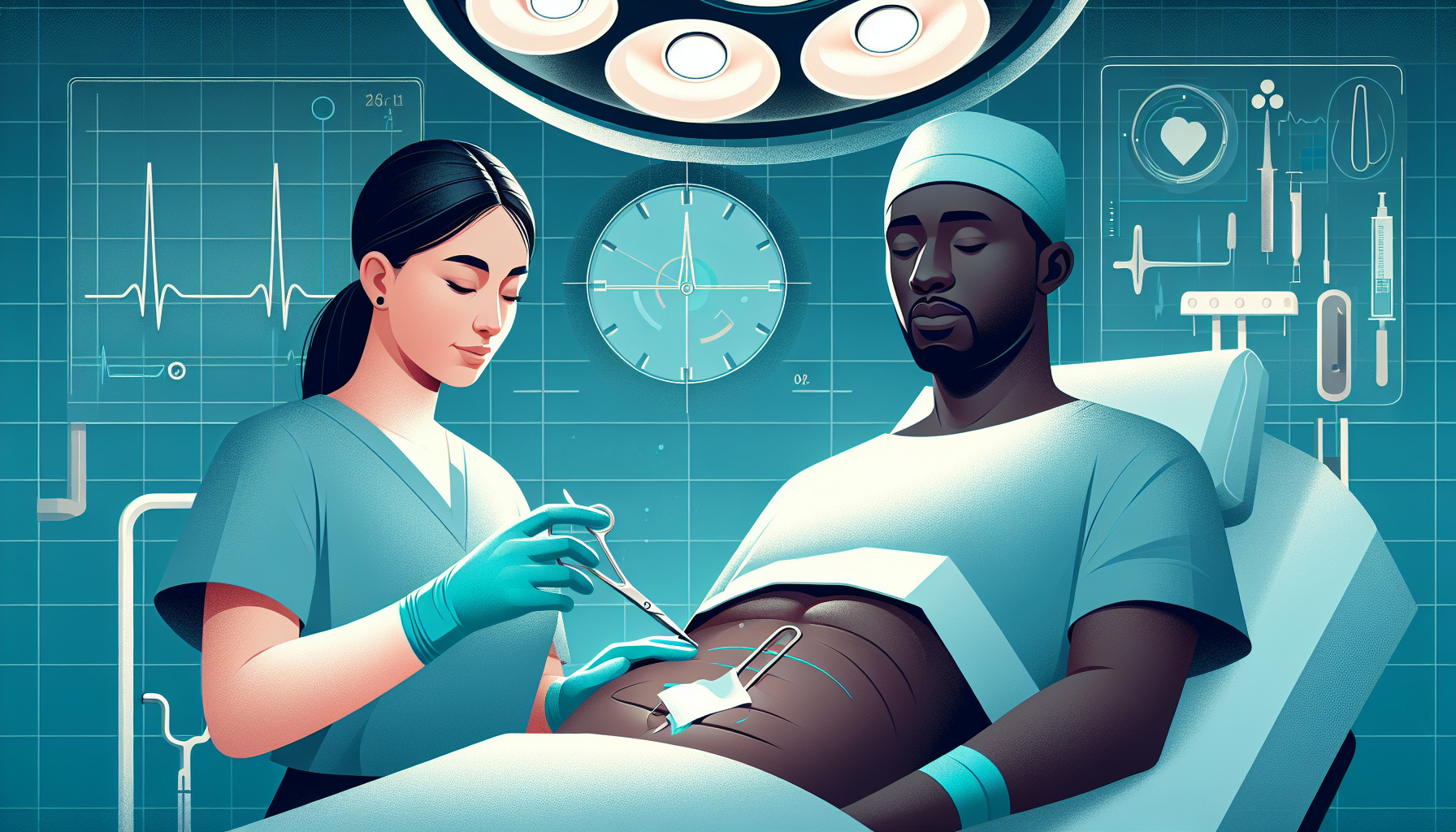Our Summary
This research paper is about a study that uses an infrared illumination system during laparoscopic surgery to treat diverticulitis, a digestive disease that commonly affects the large intestine. The infrared system helps surgeons identify the ureteral catheter, a tube that drains urine from the kidneys, reducing the risk of accidental damage during the operation.
FAQs
- What is diverticulitis surgery?
- How does an infrared illumination system assist in laparoscopic surgery for diverticulitis?
- What is the purpose of a ureteral catheter in diverticulitis surgery?
Doctor’s Tip
After diverticulitis surgery, it is important to follow your doctor’s instructions for post-operative care, including taking prescribed medications, eating a high-fiber diet, and avoiding activities that could strain your abdominal muscles. Be sure to attend all follow-up appointments to monitor your recovery and prevent any complications.
Suitable For
Patients who are typically recommended diverticulitis surgery are those who have severe or recurrent episodes of diverticulitis that do not respond to conservative treatment such as antibiotics and dietary changes. Other indications for surgery may include complications such as abscesses, perforation, or fistulas, as well as obstruction or bleeding. Additionally, surgery may be recommended for patients with complicated diverticulitis who have a weakened immune system or other medical conditions that increase the risk of complications. Ultimately, the decision to undergo surgery for diverticulitis is made on a case-by-case basis by the patient’s healthcare provider.
Timeline
Before diverticulitis surgery:
- Patient experiences symptoms such as abdominal pain, bloating, fever, and changes in bowel habits.
- Patient undergoes diagnostic tests such as a physical exam, blood tests, and imaging studies (such as CT scan or colonoscopy) to confirm the diagnosis of diverticulitis.
- Patient may be treated with antibiotics and a liquid diet to help reduce inflammation and infection in the affected area.
After diverticulitis surgery:
- Patient undergoes laparoscopic surgery to remove the inflamed or infected portion of the colon (called a colectomy).
- The surgery may also involve placing a ureteral catheter to help protect the ureters during the procedure.
- Patient may experience pain, bloating, and discomfort following the surgery, which can be managed with pain medication and a gradual return to solid foods.
- Patient may need to stay in the hospital for a few days for monitoring and recovery before being discharged home.
- Patient will have follow-up appointments with their healthcare provider to monitor their recovery and ensure that the surgery was successful in treating the diverticulitis.
What to Ask Your Doctor
- What are the risks and benefits of undergoing diverticulitis surgery?
- What is the success rate of this type of surgery in treating diverticulitis?
- How long is the recovery time after diverticulitis surgery?
- Are there any alternative treatments or procedures that could be considered instead of surgery?
- What type of anesthesia will be used during the surgery?
- Will I need to stay in the hospital after the surgery, and if so, for how long?
- What is the likelihood of needing a colostomy bag after the surgery?
- Are there any long-term effects or complications associated with diverticulitis surgery?
- How soon after surgery can I resume normal activities and exercise?
- Will I need to make any lifestyle changes or follow a special diet after the surgery?
Reference
Authors: Miura T, Tsujinaka S, Suzuki H, Sato Y, Shibata C. Journal: Asian J Surg. 2023 Jun;46(6):2423-2424. doi: 10.1016/j.asjsur.2022.12.072. Epub 2022 Dec 24. PMID: 36572616
